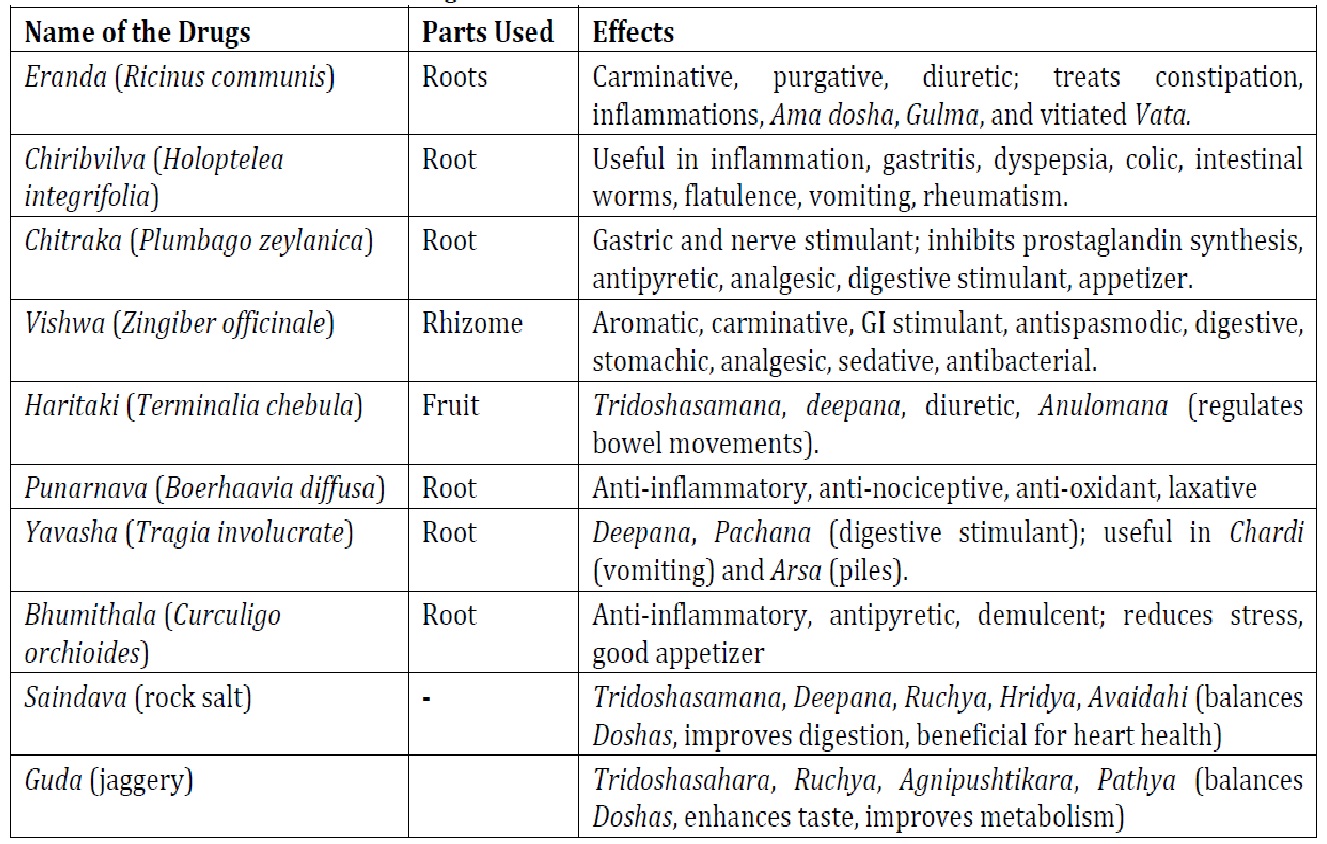Effect of Gandharvahastadi Kwath in Virechana Krama in the Management of Thyroid Dysfunction
DOI:
https://doi.org/10.47070/ayushdhara.v12i1.1880Keywords:
Gandharvahastadi Kwath, Virechan Karma, Thyroid dysfunction.Abstract
This condition manifests through symptoms such as persistent fatigue, weight gain, dry or thickened skin, constipation, muscle weakness, cramps, and stiffness. Methods and Materials: A 50-year-old female patient had morning dizziness and exhaustion, muscle cramps, pale and dry skin, dry scalp and lips, cracked heels, increased thirst, reduced appetite, hair loss, and neck swelling. She sought Ayurvedic treatment and was administered 50ml of Gandharvahastadi Kwath in Virechan Karma over a month, coupled with rock and jaggery. as a substitute for water. Results: The patient's symptoms improved greatly. Excessive thirst was lessened, appetite rose, overall weariness and dizziness subsided, and neck swelling receded. Scalp and skin dryness improved, and muscle cramping became less frequent and severe. The patient's menstrual cycle became regular, with a 35-day gap. TSH levels were normal in clinical testing. Discussion: Thyroid dysfunction symptoms are not limited to one Srotas (body channel), thus a Vaidya must check the patient's Doshavastha, Rogamarga, Srotodushti, and Nidana Panchaka. The symptoms showed an imbalance in Rasavaha and Udakavaha Srotas. Shadanga Paneeya is traditionally used in Jwara Chikitsa for relieving excessive thirst and fever. Gandharvahastadi Taila helps with Udavarta by calming Vata and easing blockages from Meda, Asruk, Pitta, and Kapha imbalance. This formulation is also good for those with mild digestion (Mrdu Koshta) and low strength (Alpa Bala) when taken with food. The treatment effectively facilitated Vata Anulomana, Snehana, and Agnideepana, achieving the desired therapeutic effects, including thirst reduction (Trishna Hara), Vata regulation (Vata Anulomana), channel purification (Sroto Shodhana), digestion enhancement (Deepana), and metabolic stimulation (Pachana) with lubrication (Snehana). Conclusion: Hypothyroidism is a lifestyle-related condition that needs a multifaceted treatment approach, including Chikitsa through Aahara (diet), Vihara (lifestyle changes), and Aushadha (medications). Interventions can restore balance by identifying the imbalanced Doshas, afflicted Srotas, and chronicity of the disease. This integrative approach improves the patient's quality of life and manages symptoms.
Downloads

Downloads
Published
Issue
Section
License
Copyright (c) 2025 AYUSHDHARA

This work is licensed under a Creative Commons Attribution-NonCommercial-ShareAlike 4.0 International License.


